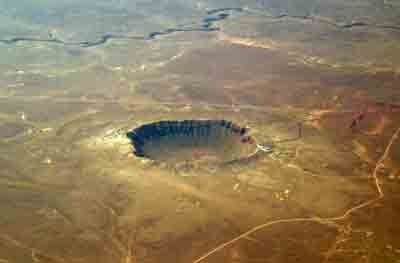Rare fragment of meteoric origin 7.7 gr, mm 27 x 18 x 5 Meteorites Raw Minerals Stones Rocks for Collection, very nice thin section of chondritic Impactite consolidated melt Breccia or Suevite, only a piece, as in photos.
Official Meteorite name: Al Haggounia 001.
Fall period: 2006, no observed.
Included to the Meteorite a geological tab dates paper.
Anomalous chondrite EL3 (old classification: Achondrite or Aubrite) subjected to W4 type weathering, containing sparsely scattered radial pyroxene chondrules that retain well preserved shapes. This meteorite is sometimes referred to as a paleo or fossil meteorite.
Several tons of this material were found in Western Sahara, on the ground or digging near Al Haggounia, in Morocco in 2007 on a scattered field that extends for about 40 km and sold to various dealers. The coordinates (latitude: 27 ° 30'N - longitude: 12 ° 30E) refer to the center of the field.
It is impossible to accurately assess the amount of material that has been recovered, but according to retailers, it is a total mass of about 3 tons that make up many samples of various sizes (from a few grams up to 50 kg). The largest stones were recovered after having excavated them from the ground.
The external surface is rusty brown due to a high impact fusion alteration. The morphology reveals a sedimentary breach cemented by iron oxide and carbonate. Changes in color from bluish gray to brown rust are observed closer to fractures. Yellow sulfur stains due to phenomena of alteration are widespread. The rocks are significantly porous with pore sizes from several centimeters to hundreds of microns. The composition is dominated by enstatite (En98Fs1Wo1) and plagioclase (Ab78An16Or5). There are also troilite, daubreelite of graphite, oldhamite, Si-rich kamacite and schreiberite.
Impactites consist of pre-existing terrestrial rocks altered and / or merged partially or totally by the very high temperatures and pressures, instantaneous and of very short duration, generated by the impact of a large meteorite, asteroids and comets on the Earth's surface: "targeted" rocks may be of different types, as are the generated impacts. As a result of an impact, new types of rocks (such as suevite and kofelsite) can be created, as well as new minerals, different from the original rocks and minerals because part or all of the included elements have been expelled or destroyed by high temperatures, such as water, crystals or any fossils.
Unfused impacts may contain wedge fractures (shatter cones), varying in size from a few centimeters to over 2 meters.
The minerals that are formed, at least on Earth, only as a result of the impacts of asteroids or comets are: the chaoite, the coexite, the lechatelierite, the maskelynite, the reidite and the stishovite.

The lechatelierite can resemble the trinitite, a molten rock that forms on the subepicentral point of the explosion of atomic bombs.
Meteor impacts can also create glass-like impacts. Normally these glasses take their name from the area in which they are found, such as for example. the glass of Darwin, the glass of the Libyan desert, the irgizites.
Sometimes the asteroid / cometary impacts hurl terrestrial rocks completely fused at a great distance, during their ballistic flight, partly even outside the Earth's atmosphere; these fragments, cooling down, pass through a plastic condition, which shapes the fragments according to the most different aerodynamic shapes.
According to many researchers, the so-called tectites, found in different places on the Earth's surface, form part of these fragments.
Breccia is a rock composed of broken fragments of minerals or rock cemented together by a fine-grained matrix that can be similar to or different from the composition of the fragments. The word has its origins in the Italian language, in which it means either "loose gravel" or "stone made by cemented gravel". A breccia may have a variety of different origins, including sedimentary breccia, tectonic breccia, igneous breccia, impact breccia, and hydrothermal breccia.
Impact breccias are thought to be diagnostic of an impact event such as an asteroid or comet striking the Earth and are normally found at impact craters. Impact breccia, a type of impactite, forms during the process of impact cratering when large meteorites or comets impact with the Earth or other rocky planets or asteroids. Breccia of this type may be present on or beneath the floor of the crater, in the rim, or in the ejecta expelled beyond the crater.
Impact breccia may be identified by its occurrence in or around a known impact crater, and/or an association with other products of impact cratering such as shatter cones, impact glass, shocked minerals, and chemical and isotopic evidence of contamination with extraterrestrial material (e.g. iridium and osmium anomalies).



